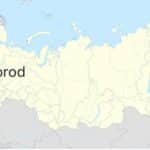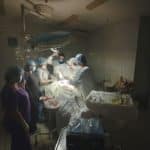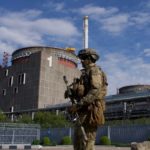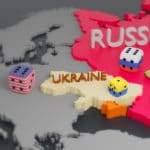Humanitarian crisis in Ukraine: Russia’s attacks on civilians can be an effective military strategy
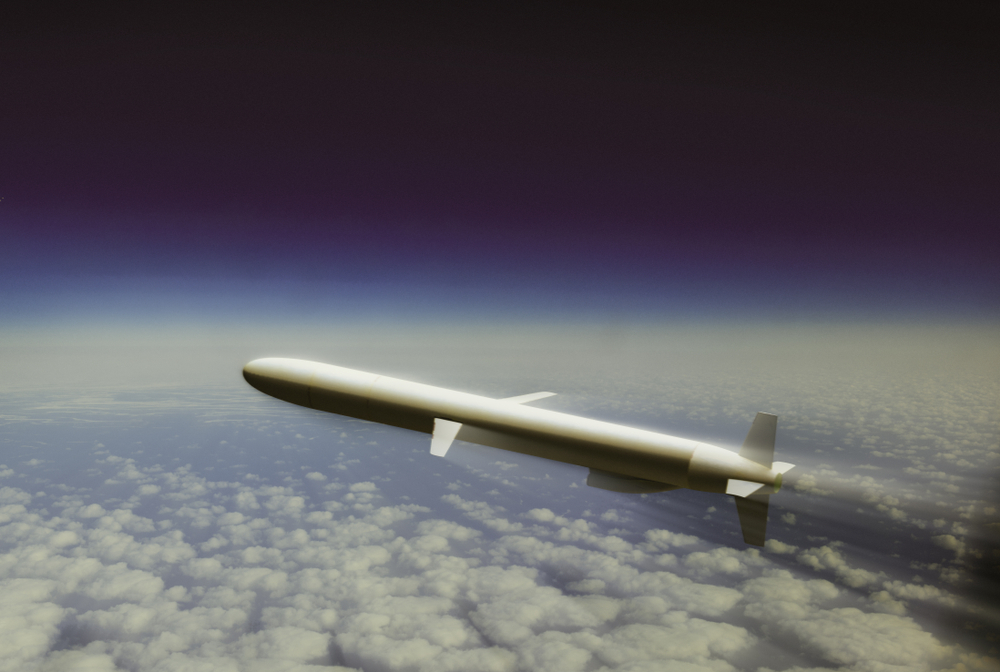
The world has become increasing alarmed by the humanitarian crisis now unfolding in Ukraine. Several million refugees have reportedly fled Ukraine amidst widespread accusations that Russia has intentionally attacked civilian population centers such as Bucha. Amnesty International has already verified numerous incidents in which Russian forces violated international humanitarian law, with President Biden forcefully denouncing Putin as a “war criminal” and accused him of committing genocide in Ukraine. Yet, the more Russia indiscriminately attacks civilians the greater the chance it will succeed in Ukraine.
The Russian military has actively targeted civilian centers including government buildings, schools and hospitals. Arguably one of the most brazen attacks entailed a Russian airstrike on a maternity hospital in Mariupol, sparking global condemnation. Even more troubling is the type of munitions the Russian military has used to attack densely populated cities. In particular, Russia has reportedly used cluster bombs — munitions that explode and subsequently release smaller projectiles or “bomblets” — on several civilian buildings including a preschool.
In 2008, the Convention on Cluster Munitions was adopted and prohibited signatories from developing or utilizing cluster bombs, although both Russia and the United States refused to sign the treaty. Russia has also deployed thermobaric weapons or “vacuum bombs” which first disperse fuel around a target before igniting in a high-temperature explosion.
Unfortunately, Russia’s indiscriminate attacks on civilians can be an effective military strategy. As I describe in my forthcoming book, “When Bad States Win: Rethinking Counterinsurgency Strategy,” Russia has a demonstrated track record of successfully employing barbaric strategies in order to defeat its adversary. During the Second Chechen War, Russia relied on heavy artillery and air strikes to effectively destroy the capital, Grozny. Civilians were detained without due process, tortured, raped and executed. Such barbaric methods can be an extremely potent means of convincing civilian populations to capitulate and surrender. The cost of resistance simply becomes too much to bear. In short, high levels of brutality can exact acquiescence from civilians and weaken opposition groups.
It is quite possible that Putin can win the war in Ukraine by ratcheting up the level of indiscriminate attacks on Ukrainian citizens. The greater the humanitarian costs and fear that the Russian military can impose, the more likely it will succeed in conquering Ukraine. Citizens may be dissuaded from taking up arms against the Russian army or simply flee the country. Indeed, my research indicates that mass displacement can be an effective weapon of warfare.
However, there are a few notable caveats. The outcome of Russia’s offensive in Ukraine will ultimately hinge upon three distinct elements of military effectiveness: physical, conceptual and moral.
The physical component simply refers to military power including equipment and manpower. Russia clearly possesses a formidable military force, but salient weaknesses have emerged including a lack of equipment, logistical failures and insufficient manpower. The military has reportedly lost a number of high-ranking generals in combat which may indicate a degree recognition among officials that operations are suffering from poor command and control. More recently, Russia has asked China for military equipment to help reinforce its offensive. As a result, military experts believe Russia is fast approaching a tipping point as it may run out of equipment and manpower necessary to sustain the Ukrainian invasion.
The conceptual component is based on military doctrine and strategy. Putin must employ only the most ruthless and extreme forms of brutality against civilians — any moderation or respite will permit the Ukrainian military and opposition forces to regroup and shore up defenses. Indeed, it appears that Putin is already increasing attacks on population centers as he recognizes that the initial invasion has encountered stiff resistance and has not achieved a quick victory as perhaps expected. It is also likely Putin will resort to terrorist tactics and even reinstitute “filtration camps” — temporary internment camps that were used during the Chechen Wars in which Russia arbitrary detained, tortured and even executed civilians without due process.
Finally, the moral component refers to the political motivation and leadership necessary to prosecute the war effort. Putin will need the backing of political elites and oligarchs to condone a barbaric strategy that violates humanitarian law. Indeed, domestic support was a critical component of Russia’s success in the Second Chechen War. However, with respect to the current invasion of Ukraine, there appears to be notable fissures among political elite which may reduce Putin’s ability to wage a brutal campaign of violence. As Western allies place increasing pressure and financial sanctions on Russian elites, many are beginning to call for a swift resolution of the conflict. That said, Putin relies on a small coterie of military advisers and may be immune to internal dissent.
The outcome of the Ukrainian invasion remains to be seen. On the one hand, Russia is vulnerable along all the aforementioned factors which may provide an opportunity for Western allies to counter Putin’s aggression, especially through the provision of military aid. The international community also needs to apply consistent pressure in highlighting human rights abuses and reinforce the normative treatment of civilians in war. On the other hand, Russia retains the ability to bolster its military forces while Putin remains insulated from both international prosecution and domestic opposition. It is therefore still possible that Russia may win by killing civilians.
Source: thehill.com


